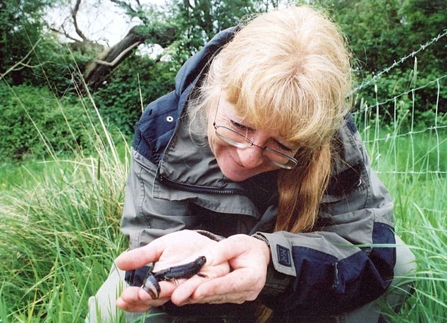The pond was properly wild and teeming with life. Our chief excitement was the little dragons, black with orange and black-spotted bellies and wearing extravagant wavy crests along their backs. We were mesmerized. Our holidays were usually spent in Scotland, where no such creatures were found at that time, and this was our first meeting with great crested newts in their breeding finery. Several were carried off in a bucket to become ‘pets’ – an action quite acceptable in the early 1960s but now liable for prosecution. Needless to say, the whole lot decamped overnight, and hopefully found a suitable pond to resume their wild lives.
I still have a great fondness for newts. Great crested newts are now a protected species, and it is an offence to willfully harm, kill or trade in them, or to disturb, handle, possess or collect them or to disturb their habitat, except under licence. From being ‘fairly common’ at the beginning of the 20th century, they are now uncommon, though still widespread. A marked decline is noticed in the last 50 years, and despite legal protection, numbers are still declining overall. The loss of farm ponds (over 50% gone in the last century) and poor water quality in those remaining has impacted the great crested newts more than the other two native species – smooth newt and palmate newt – as the larger species takes less readily to garden ponds, preferring large, well-established ponds with plenty of weed cover but no fish. Open areas of pond bed are used as ‘theatres’ for the elaborate courtship dance – great crested newts are much more bottom-dwellers than their smaller cousins. Unlike immature smooth and palmate newts which remain well hidden amongst vegetation, young crested newts swim freely mid-water, avoiding predation by larger newts but offering an easy snack for fish. Careful pond design and management would be needed to attract them to a garden pond.



